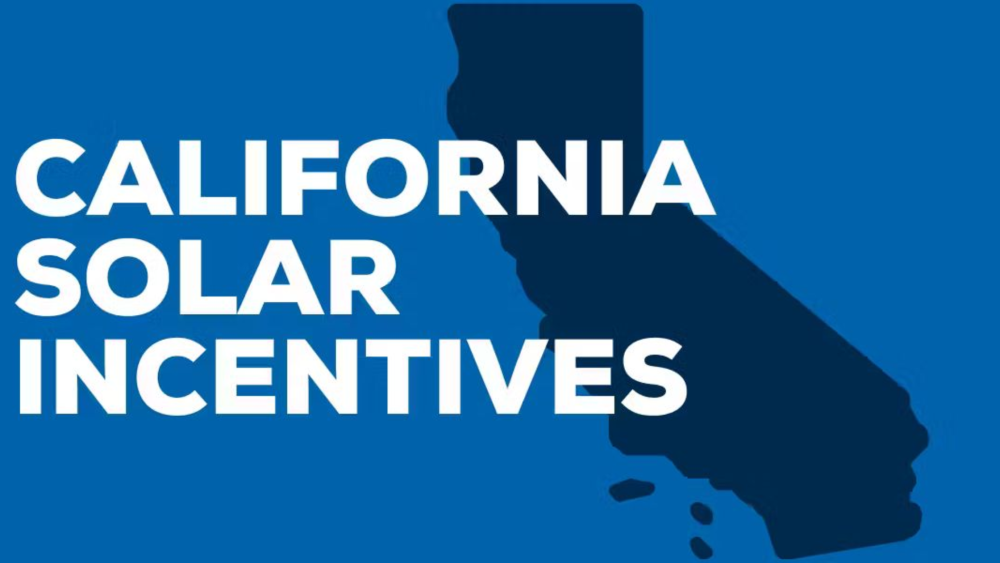A Comprehensive Guide to California Solar Incentives and Rebates
Written on . Posted in Solar incentives.

Try our solar cost and savings calculator
Maximize Your Savings with California’s Solar Programs
California is known for leading the nation in solar energy adoption, thanks in large part to its generous solar incentives and rebates. Whether you’re a homeowner or business looking to go solar, the state offers several financial incentives to reduce the upfront cost of installation and maximize your energy savings. This guide will provide an overview of the available California solar incentives and how you can take advantage of them.
1. Federal Solar Investment Tax Credit (ITC):
-
What It Is:
While not specific to California, residents can take advantage of the Federal Solar Investment Tax Credit (ITC), which allows homeowners and businesses to deduct 26% of the cost of installing solar panels from their federal taxes. This percentage is set to decrease over the next few years, so the sooner you install solar, the greater your savings. -
How It Works:
The ITC applies to both residential and commercial solar installations, reducing your tax liability based on a percentage of the system’s total cost. For example, if your system costs $20,000, you could claim a $5,200 tax credit.
2. California’s Net Energy Metering (NEM):
-
Overview:
California’s Net Energy Metering (NEM) program allows homeowners with solar systems to sell excess energy back to the grid. This means you can earn credits for any extra electricity your system produces, which can be applied to future energy bills. -
How It Works:
Under NEM, your solar panels generate electricity during the day, and any surplus is sent to the grid. At night or during times of low solar production, you can draw from the grid using the credits you earned earlier. -
NEM 3.0 Changes:
Keep in mind that California is transitioning to NEM 3.0, which may change the structure of energy buyback rates. Stay informed about the latest updates to make the most of this program.
3. Self-Generation Incentive Program (SGIP):
-
Overview:
The SGIP provides incentives for installing battery storage systems, which store excess solar energy for use during power outages or periods of high demand. -
Eligibility:
California residents who install battery storage alongside their solar panels can qualify for SGIP rebates. The incentive amount depends on the size of the battery system and your local utility provider, but rebates can cover a significant portion of the battery's cost.
4. Solar for Affordable Housing (SASH) Program:
-
Overview:
The SASH program is designed to make solar energy accessible to low-income families. Administered by GRID Alternatives, SASH offers financial incentives to help eligible households install solar systems at little to no cost. -
How It Works:
SASH provides one-time, upfront rebates to qualified low-income homeowners based on their household income and location. The program’s goal is to reduce energy bills for families who need it most while promoting solar adoption across the state.
5. Property Assessed Clean Energy (PACE) Financing:
-
What It Is:
PACE financing allows homeowners to finance solar installations through property tax assessments. Instead of taking out a traditional loan, you pay for the system over time through an additional charge on your annual property tax bill. -
Benefits:
PACE programs often offer favorable terms and are repaid through property taxes, which can be passed on if you sell your home. This makes it a great option for homeowners who want to invest in solar without upfront costs.
6. Local Utility Rebates:
-
Overview:
In addition to statewide programs, many local utilities in California offer solar rebates and incentives to encourage homeowners and businesses to switch to solar energy. Check with your utility provider for any additional rebates available in your area. -
Examples:
Some utilities, like Los Angeles Department of Water and Power (LADWP), offer rebates for solar installations, further reducing the upfront costs for residents in their service areas.
Conclusion: California continues to lead the way in solar energy adoption, and with a variety of incentives, rebates, and financing options available, there’s never been a better time to go solar. From the Federal ITC and Net Energy Metering to state programs like SGIP and SASH, these initiatives make solar energy more affordable and accessible for all Californians.
CTA: Ready to take advantage of California’s solar incentives? Contact us today to find the best solar solution for your home and start saving on energy costs!
Try our solar cost and savings calculator




